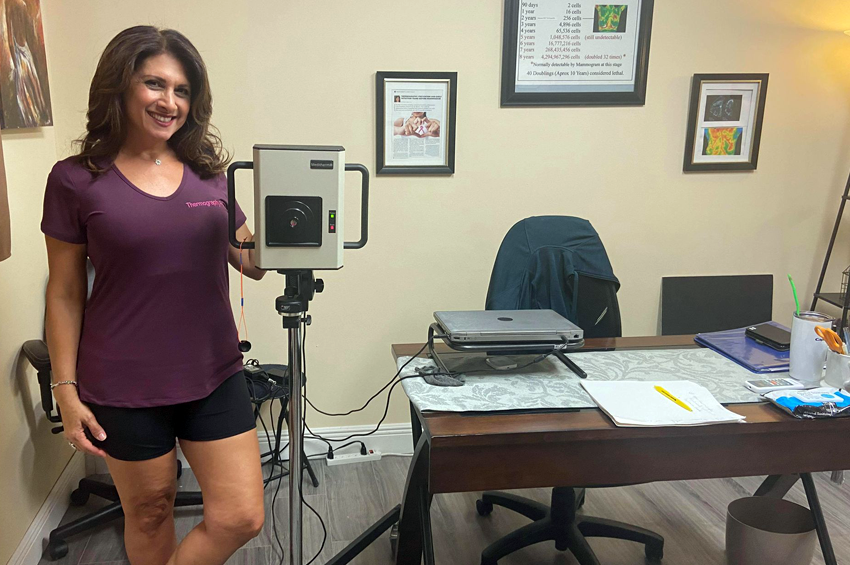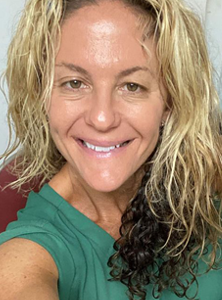Malcolm Gladwell once said “If everyone has to think outside the box, maybe it is the box that needs fixing.”
Do mammograms show breast cancer at its earliest possible stage of inception? You may be surprised at the answer.
Mammograms are the gold standard for breast cancer screenings, but did you know that they only show a structural mass, and not cancer causing inflammation that predates an actual breast lump/mass/tumor? Mammograms irradiate the breast tissue, and reflect tumors that can take 6‐10 years to develop.
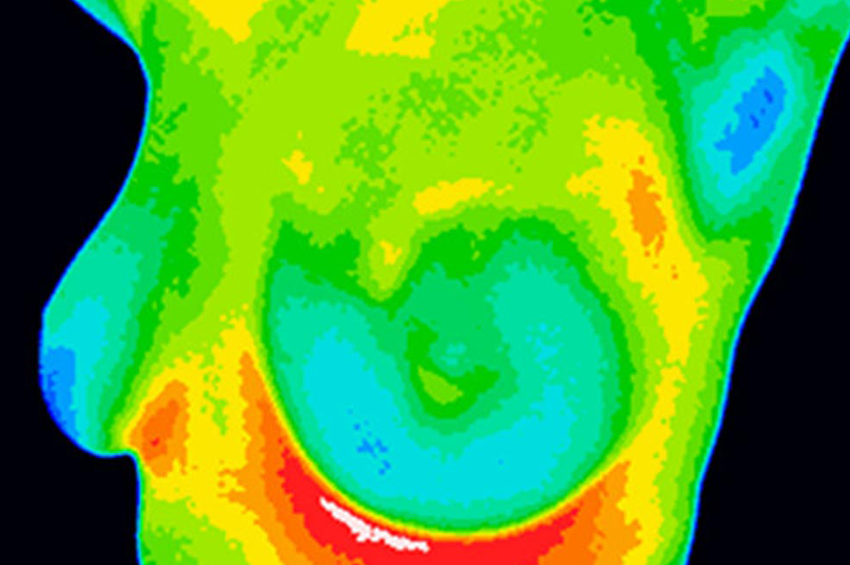
Breast Thermography: Understand What it Is
Breast thermography or DITI (Digital Infrared Thermal Imaging) is a preventative imaging or screening that measures the amount of heat emitted from the body due to physiological or systemic inflammation over time. Under normal circumstances, heat emitted from the body is symmetrical and under the control of the central nervous system. When the body is subjected to inflammation, heat will emanate unilaterally (on one side), more than the other side. Inflammation is a precursor to most illnesses, namely cancer, heart disease and autoimmune diseases.
Thermography is contactless, painless, non compressive to the breast or any area being screened, 100% safe, radiation free, FDA approved since 1982, no prescription necessary and affordable. It costs cash a mere $165, and credit card $175 including a comprehensive report read by radiologist. Some strong PPO plans cover mammogram, and HSA (Health Savings Accounts) are accepted.
If anything suspicious is discovered on a thermogram, an ultrasound is suggested. Also functional nutrition can follow a suspicious scan to begin a low inflammatory diet, hormone balancing, GI map test for gut health, xenoestrogren removal (parabens, mineral oils, sulfates and other common, cancer causing skin/body care ingredients).
Thermography can screen not only breast tissue, but the face for sinus, TMJ, root canal and dental inflammation, the thyroid and carotid artery occlusion, the spine for nerve root irritation, hands and feet imaging, which can presage prediabetes and some liver, spleen and bladder inflammation. Thermography does NOT see the brain or blood cancers, however.
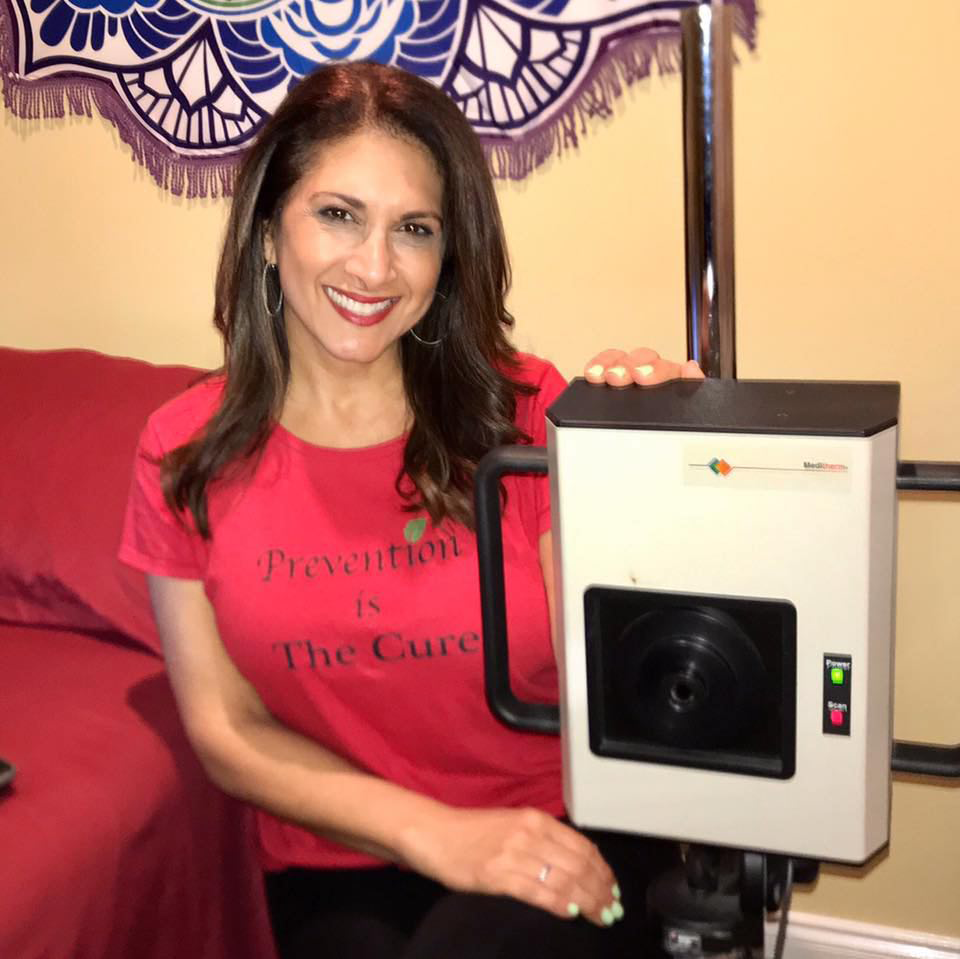
Meet the Pioneering Thermographer Donna Tomey Barahona
CCT (Certified Clinical Thermographer) Donna Tomey Barahona has dedicated her life to patient education of breast thermography, after her own life experience with breast cancer. Donna was diagnosed in 2006 with stage 2B breast cancer in her right breast (her tumor was 2.5 cm) after a self examination. She had a mastectomy shortly after her diagnosis, a grueling chemo regimen (Donna did 3 of the 8 recommended chemotherapies, but stopped due to atrocious side effects) and a yearlong Herceptin infusions. Six weeks post mastectomy, Donna visited her own thermographer for a scan of her left breast that revealed inflammation in that natural breast.
She embarked on a detailed hormone analysis called the DUTCH test, dried urine test of comprehensive hormones, which indicates sex, adrenal, metabolic hormones levels and the level of methylation, a biochemical process whereby a methyl group is added to regulate/stabilize gene, protein and RNA function. Poor methylation can cause cancer, heart disease, depression, irritable bowel syndrome and other illnesses.
Donna consulted with a functional nutritionist and honed her Mediterranean diet with organic foods, with dedicated and thoughtful lifestyle changes. She remains cancer free to this day, gets regular thermography screenings AND follow up ultrasounds, lives an active lifestyle of organic food and exercise.
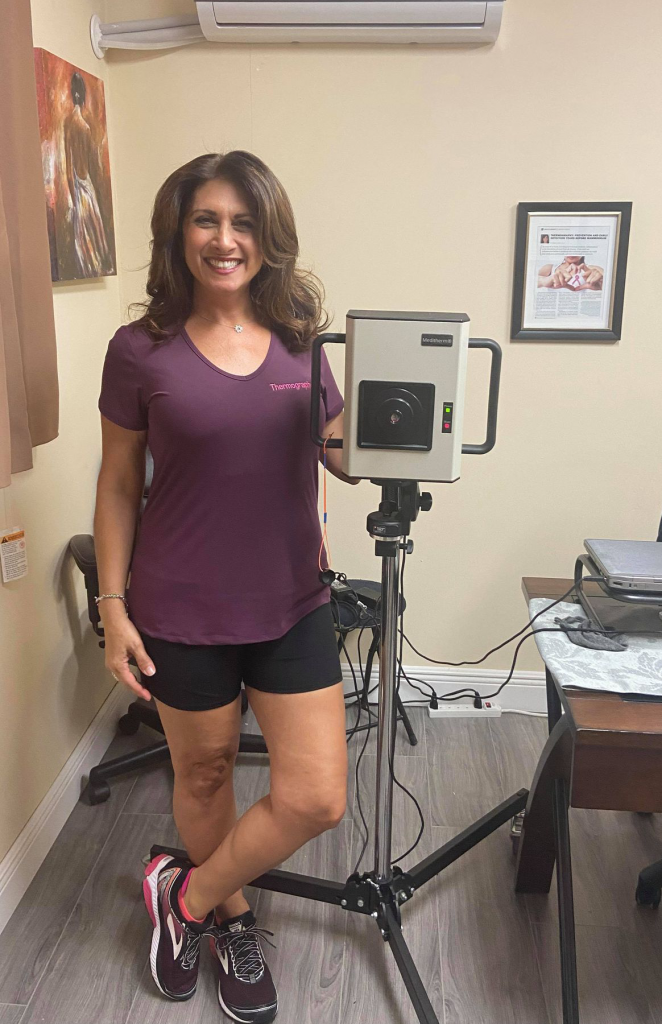
Thermography as a Diagnostic Tool
Modern mammograms were developed in the late 1960s and were officially recommended since 1976. Annual mammograms are recommended starting at age 40, and even earlier if there is a familial history of breast cancer. While the mammogram is recommended yearly for most women, the screening does yield false positive and false negatives (especially if a woman has dense breasts) and ultimately requires an ultrasound for clarification anyway. Medicare covers an annual mammogram, as do most private insurance carriers.
Many women may encounter skepticism from their health care provider when asking for validation of thermography as a mammogram alternative. Angiogenesis, or the development of new blood vessels, namely for breast cancer cell replication and development is a definite advantage of thermography screenings. Breast cancer cells double every 90 days and mammograms detect structural masses much later than a thermography would reveal breast
inflammation.
If a woman encounters resistance to a thermography, it is her choice to change health care providers, or do the thermography and breast ultrasound independently, to follow.

The Future of Breast Thermography
Donna shares that since her initial breast cancer diagnosis in 2006, more women are seeking out alternatives to mammogram, either due to false positive or false negative scares, ruptured breast implants following mammograms, and general disenchantment with mammogram accuracy (mammograms miss 20% of breast cancers on average).
Thermography can be a massively worthwhile generalized, systemic screening tool of inflammation. In fact, a woman on the fence can also get both a mammogram and a thermogram for a more comprehensive screening.
Health is an investment, and thermography with its reasonably charge and thorough report, can be a holistic starting point for women (and men) to revamp their health and to reduce their toxic load.
Thermography First: 1915 NE 45th Street, Suite 201 | Fort Lauderdale, FL











